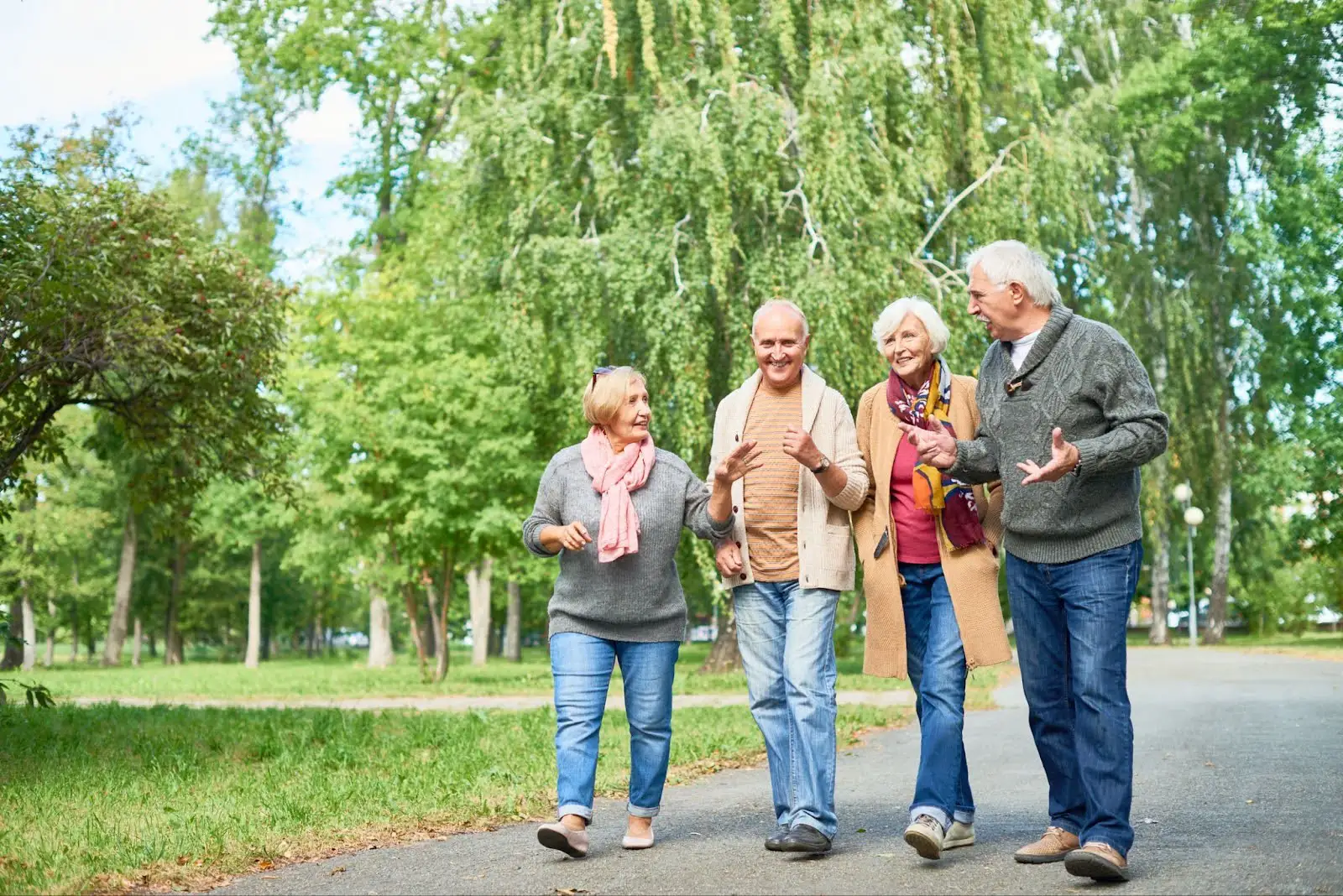Loneliness in seniors is more than just an occasional source of melancholy – it can have serious consequences for physical and mental health. Persistent feelings of loneliness and social isolation can lead to depression, cognitive decline, and an increased risk of chronic illness.
Unfortunately, many older adults experience loneliness due to factors like living alone, limited mobility, or the loss of close friends and family. Recognizing the signs of loneliness in elderly people – such as withdrawal from social activities, changes in mood, or a lack of motivation – can help family members and caregivers take proactive steps to support their loved ones. Learn more about keeping residents involved and active.
In this blog, we’ll look at how to spot loneliness in seniors, why it’s a serious health risk, and the best ways to help – whether through support groups, social activities, or senior living communities.
At The Clare, we recognize the importance of social engagement in senior well-being. That’s why we’ve designed our community to foster social interactions, provide fulfilling activities, and create a strong sense of purpose for our residents.
Signs of Loneliness in Elderly People
Recognizing the signs of loneliness in elderly individuals is the first step toward offering support. Some common indicators include:
- Withdrawal from social activities – Avoiding events or activities they once enjoyed.
- Changes in mood or behavior – Increased irritability, sadness or apathy.
- Neglecting personal hygiene or home upkeep – A lack of motivation to care for themselves or their surroundings.
- Expressing feelings of isolation or loneliness – Openly stating they feel alone or have no one to talk to.
- Declining physical health – Chronic loneliness has been linked to high blood pressure, weakened immunity, and even increased mortality risk.
Problems for Elderly People Who Live Alone
Older adults who live alone are at a higher risk of experiencing loneliness and depression. Without regular social interactions, they may feel disconnected from the world around them. Practical challenges – such as difficulty driving, mobility limitations, or a lack of nearby family – can make social engagement even harder.
For those living alone, combatting loneliness requires a proactive approach, such as joining local senior groups, scheduling regular visits with family, or participating in online communities. However, these efforts may not always be enough, making a transition to a more socially engaging environment an appealing solution.
Loneliness in Retirement
Retirement brings newfound freedom, but it can also lead to unintended loneliness. Without a structured daily routine or workplace interactions, many seniors struggle to maintain an active social life.
As social networks shrink, it’s essential to find new ways to stay engaged, such as joining hobby clubs, volunteering, or moving to a community where socialization is built into daily life.

The Effects of Loneliness on Seniors
Loneliness isn’t just an emotional challenge; it can significantly impact a senior’s physical and mental health, well-being and longevity. Senior isolation, where older adults lack social interactions or meaningful social connections, is a growing public health concern with serious consequences.
- Cognitive Decline and Increased Dementia Risk: Social isolation accelerates cognitive decline and raises the risk of Alzheimer’s disease. Staying socially engaged helps maintain brain function and mental sharpness.
- Greater Vulnerability to Elder Abuse: Isolated seniors are more prone to financial scams, neglect and mistreatment due to a lack of regular oversight from trusted individuals.
- Mental Health Challenges (Depression and Anxiety): Loneliness can lead to depression and anxiety, particularly in seniors who lack social support or a sense of purpose.
- Increased Risk of Heart Disease and High Blood Pressure: Research links loneliness to an increased risk of cardiovascular issues, including hypertension and heart disease.
- Increased Need for Long-Term Care: Loneliness often leads to physical and mental decline, increasing the need for skilled nursing, assisted living or memory care services.
Challenges of Combating Loneliness at Home
For many older adults, overcoming loneliness and social isolation while living at home can be challenging. Common obstacles include:
- Limited mobility – Seniors with mobility issues may struggle to leave the house and engage in social activities.
- Transportation difficulties – Without reliable transportation, seniors may miss out on events, group gatherings, and other opportunities for social interaction.
- Lack of regular social engagement – Many older adults lose close friends, family members or social networks over time, making it harder to stay connected.
- The limitations of social media – While social media can help seniors stay in touch with loved ones, it lacks the depth and benefits of in-person connections.
At home, combating loneliness can feel overwhelming, especially for seniors who rely on others for transportation or struggle to find consistent opportunities for social engagement. While technology can help maintain connections, it often cannot replace the value of in-person interaction and meaningful relationships.
Support Groups for Lonely Seniors
One way to help seniors overcome isolation and foster connections is through support groups and community programs. These groups provide a welcoming environment for older adults to engage with peers, share experiences, and rebuild their social networks. Some options include:
- Local senior centers – Many communities offer social groups, hobby clubs and wellness programs.
- Faith-based groups – Churches, synagogues, and other religious organizations often provide social opportunities.
- Online forums and virtual meetups – Social media and video chat platforms can help maintain long-distance friendships.
- Volunteer organizations – Giving back can provide a renewed sense of purpose and connection.
That’s why many older adults find that moving to a senior living community provides the best solution for maintaining a robust, vibrant lifestyle.

Connecting at The Clare
At The Clare, we’ve created a dynamic environment where social engagement and meeting new people are natural components of daily life. From art classes and group fitness to lively social events and outings, there’s always something to do and people to share it with.
Our community fosters meaningful interactions through:
- Clubs and interest groups – Whether it’s book clubs, gardening, or music appreciation, our residents stay engaged with their passions.
- Wellness and fitness programs – Exercise classes encourage physical activity while providing social opportunities.
- Social events and outings – From themed dinners to cultural excursions, residents enjoy a vibrant social calendar.
- Supportive staff and neighbors – The Clare’s welcoming environment makes it easy to form new friendships and find a strong sense of belonging.
We understand that loneliness can be challenging, but we’re dedicated to ensuring our residents feel connected, supported and fulfilled.
Are you or a loved one struggling with loneliness? Discover how life at The Clare can provide the social engagement and enriching experiences you deserve. Contact us today to schedule a tour.

